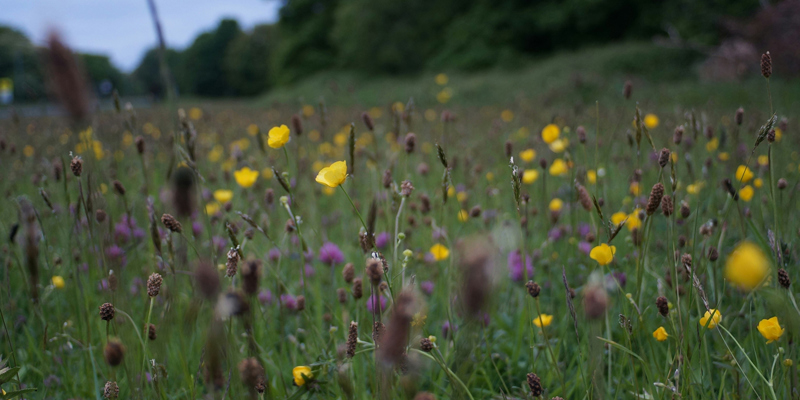
Biodiversity Net Gain (BNG)—where are we now?
In July last year, Russell-Cooke’s planning team published an article on Biodiversity Net Gain (BNG) in the context of change of use applications. In this briefing, legal director Joanna Crow takes stock of the current landscape, exploring the market impact of BNG and what's next.
The requirement for development (bar some exceptions) to address biodiversity—and for schemes to deliver a 10% net gain on biodiversity when carrying out their schemes—came into effect initially in February 2024. BNG is incorporated via a deemed planning condition requiring the approval of a BNG Plan by the local planning authority (LPA) prior to commencement of development.
Amidst a torrent of legislative changes, policies, guidance and consultation papers pouring out of the current Government, BNG may seem like old news but it is worth reflecting on its impact in the last year—from opportunities it has created for the market, local authority responses and looking ahead at what’s next.
Market impact of BNG
BNG is here to stay and as such it has had an inevitable impact on how land is transacted and valued. Establishing the biodiversity value of a site is at the heart of understanding the ecological value, the mitigation required, and how this will be realised in terms of habitat creation and maintenance. This scientific analysis requires input from ecologists who will have seen a surge in work over the last year and a half.
Biodiversity units and their trade has opened up a new market of commerce. Not all schemes can offset their biodiversity impact within the scheme land (i.e., within their redline planning boundary), and so must consider alternative third-party land (receptor sites) for their BNG. The sale of BNG units is unregulated (though this may change in the future) and this has created a market for agents, brokers, landowners and local authorities. Unit costs vary significantly linked to distinctiveness of habitat. As of May this year, the Government estimated that 2500 hectares of habitat were listed on the national register, with many more sites preparing for registration, thus helping to increase private investments in nature recovery.
Local authorities
The way in which local planning authorities (LPAs) have approached BNG from a policy perspective has varied significantly, as one might expect. Bearing in mind that the 10% requirement is a minimum requirement, there are authorities that are seeking higher BNG in their administrative areas, for example, Guildford seeks 20%. It’s a reminder that when considering BNG, one must look, not only at the national requirements, but local policy.
Aside from the imposition of a BNG condition, some authorities are incorporating BNG obligations in their s106 planning agreements. These should be carefully scrutinised and confined to those elements that are not covered by the BNG condition, for example, the payment of a BNG monitoring fee or an obligation to provide periodic reports.
Some LPAs are taking proactive steps by aiming to deliver their own donor BNG sites. This is so small/medium size developments in particular can use off-site credits from these sites and not face the extra costs of statutory credits, which could impact the viability of the scheme. This is similar to those LPAs who delivered offsite SANG (Suitable Alternative Natural Greenspace) to ensure the same did not become a block to delivery.
What’s next?
The Government is currently reconsidering the implementation of BNG.
The current consultation and the Reforming Site Thresholds working paper provide a lot of detail but in summary the following four broad areas to the implementation of BNG are being considered:
- Reform of existing exemptions and introduction of new exemptions. The Government is considering changing thresholds for minor development (fewer than 10 dwellings, or 0.5-hectare sites), the introduction of a medium category of development (sites between 10 and 49 homes up to one hectare in size). Further exempt schemes are also being considered, for example parks, public gardens and playing fields. This could significantly impact landowners who have created off-site BNG landbanks for credit sales, raising questions about whether all such credits can still be sold and at what price. For those still considering entering the market, many are now rethinking. All stakeholders will welcome clarity as soon as possible.
- Streamlining the small sites metric and considering whether this could apply to medium-sized developments. The small sites metric is a simplified metric calculator for BNG. For example, it contains a limited distinctiveness of habitat.
- Relaxation of the biodiversity gain hierarchy and disapplication or amendment to the spatial risk multiplier for minor development. The current hierarchy prioritised onsite offsetting, followed by offsite offsetting, and as a last resort the acquisition of statutory credits. If BNG is not offset onsite, then more BNG units are required to achieve the 10% gain and this is the effect of the spatial risk multiplier.
- Delivery of compensation for development on brownfield sites with open mosaic habitat, applicable to all development categories. Currently Open Mosaic Habitat (a patchwork of multi-layered habitats on brownfield sites) is assessed as high distinctiveness and must currently be compensated on a like-by-like basis. The Government is therefore considering whether alternative, appropriate replacement habitats should be allowed to offset Open Mosaic Habitat for these types of schemes.
Consultation closes 24 July 2025 so watch this space!
Joanna Crow is a legal director in the real estate, planning and construction team, advising on the full spectrum of development work involving residential, commercial and mixed-use schemes as well as advising on consortium and strategic land.
Get in touch
If you would like to speak with a member of the team you can contact our real estate planning and construction solicitors; Holborn office (Email Holborn) +44 (0)20 3826 7523; Kingston office (Email Kingston) +44 (0)20 3826 7518; Putney office (Email Putney) +44 (0)20 3826 7518 or complete our form.
